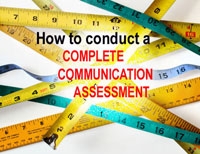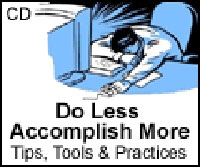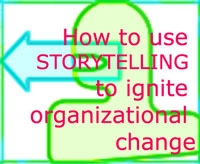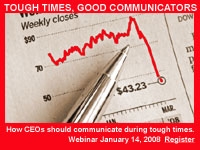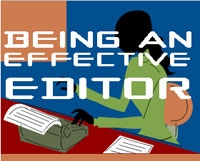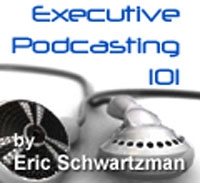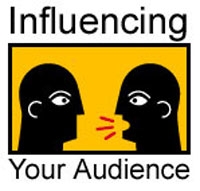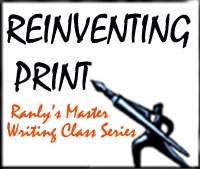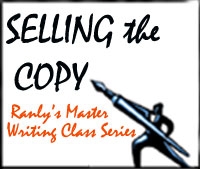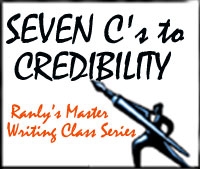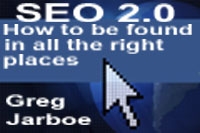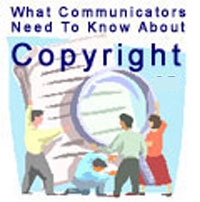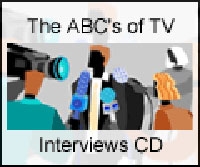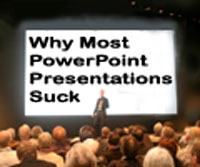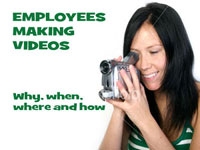- Do your communication efforts tend to be “one-offs” that consume a lot of time and effort but don’t always generate the results you had hoped for?
- Do senior leaders’ eyes glaze over when you explain your latest “big idea”?
- Do you wish you had more time to spend learning about new things and less putting out fires?
While strategic planning is probably at the top of the list of things that most communicatorsdon’t want to do, the reality is that when done well, strategic planning can not only help to save time, and money, but can increase the odds of achieving desired communication outcomes. And, the good news is, effective planning doesn’t have to take weeks or months or result in dozens of meetings. In fact, the process can actually be quite simple and straightforward.
This webinar will offer easy-to-follow steps and provide practical tips and advice that can be used for any planning effort—from developing an internal communications plan to developing a marketing campaign—or even focusing on a single initiative.
What You Will Learn:
- How to position the plan for success by starting with the end in mind
- Why your mission statement is your friend
- How and why to align your efforts with your organization’s strategic plan
- A step-by-step process for developing a strategic plan
- Developing a process for plan updates – how to keep the plan alive
- How to build measurement into the plan
- How to make sure things get done!
Who Should Attend
- Communicators, PR and marketing professionals at all levels.
Presented by:
 Linda Pophal is CEO of Strategic Communications, and a marketing and communication strategist with 20+ years experience in healthcare, education and not-for-profit marketing and communications. She has managed all aspects of corporate and marketing communication including employee communication, public relations, advertising, social media, market research, brand management and strategic planning. Pophal has developed and implemented strategic business, marketing and communication plans for healthcare and educational organizations and consultants, generating measurable results based on client goals. She has developed and delivered training programs for national and local audiences on all aspects of communication management and employee relations. She is author of The Essentials of Corporate Communications and PR and Complete Idiot’s Guide to Strategic Planning.
Linda Pophal is CEO of Strategic Communications, and a marketing and communication strategist with 20+ years experience in healthcare, education and not-for-profit marketing and communications. She has managed all aspects of corporate and marketing communication including employee communication, public relations, advertising, social media, market research, brand management and strategic planning. Pophal has developed and implemented strategic business, marketing and communication plans for healthcare and educational organizations and consultants, generating measurable results based on client goals. She has developed and delivered training programs for national and local audiences on all aspects of communication management and employee relations. She is author of The Essentials of Corporate Communications and PR and Complete Idiot’s Guide to Strategic Planning.
Are you tired of struggling to get—and keep—people’s attention and convince them to take action?
You can improve your ability to connect with and influence others by learning how our brain works and applying some simple techniques based in neuroscience.
Forget about right brain/left brain, an archaic concept. Instead, the “social brain” drives our thinking and our actions.
This session will briefly cover basic neuroscience principles geared toward non-scientists. We’ll then focus on how you can apply those principles to help yourself and others think better and perform at higher levels. By taking these actions, you can improve your influencing skills and actions.
Learn how to:
- Increase your self-awareness to improve your ability to influence
- Design the best environment for influencing
- Speak and write with intent to make better connections with others
- Make your messages more compelling and memorable
- Listen more effectively
- Slow down and quiet the brain to tap into the unconscious and speed up gaining insights and influencing
- Ask powerful thinking questions that increase focus and gain greater clarity
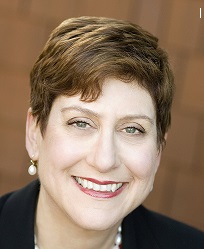 Your webinar leader, Liz Guthridge is an award-winning consultant, leadership coach and trainer who’s studied with Dr. David Rock of The NeuroLeadership Institute, Dr. BJ Fogg, founder of the Stanford Persuasive Technology Lab and other luminaries in the fields of employee communication and organizational change. Liz has extensive experience supporting leaders improve their communication, develop new habits and adapt their organizations.
Your webinar leader, Liz Guthridge is an award-winning consultant, leadership coach and trainer who’s studied with Dr. David Rock of The NeuroLeadership Institute, Dr. BJ Fogg, founder of the Stanford Persuasive Technology Lab and other luminaries in the fields of employee communication and organizational change. Liz has extensive experience supporting leaders improve their communication, develop new habits and adapt their organizations.
Liz Guthridge is an award-winning leadership coach, consultant and trainer with extensive change, employee communication and organization development experience.
As the founder of the boutique firm Connect Consulting, Liz works with leaders at all levels to help them move from blue-sky thinking to greener pastures actions. With her support, Liz’s clients enhance the clarity of their ideas, plans and actions. Her clients also improve the quality of their conversations, their ability to influence and their skill in building habits.
Liz contributed the chapter “Change Through Smart-Mob Organizing: Using Peer-by-Peer Practices to Transform Organizations” to the book The Change Champion’s Field Guide (Wiley 2013).
Besides being a certified coach in brain-based coaching, she is serving as a teaching assistant for the Executive Masters in NeuroLeadership program through the NeuroLeadership Institute co-founded by Dr. David Rock. Liz also is a graduate of Dr. BJ Fogg’s Persuasion Boot Camp and is one of his Tiny Habits™ coaches.
So often communicators surrender to time and budget challenges jumping into tactics or solutions without ever conducting a complete communications assessment. But without a baseline, it is nearly impossible to measure the success of ones efforts. It is also more challenging to demonstrate ones strategic abilities. Thus, communicators cannot afford to not conduct a complete communications assessment.
What You Will Learn:
- Why it is crucial for communicators to take time out to conduct a communications assessment and understand business needs.
- What formal and informal communications assessment tools/tactics will support your time and budget.
- How much time and budget is required to support formal and informal communications assessment tools/tactics.
- How to effectively communicate your assessment findings.
- How to leverage your findings to create a solid communication strategy and plan.
- What lessons can be learned from real world communications assessments conducted for NEC, Adidas-Solomon, UOP, ServiceMaster and other leading organizations.
Who Should Attend
This session is perfect for any level of experience, from those who are just starting in the field or those who have never conducted an assessment, to seasoned communication veterans.The seminar is designed for communication professionals who want to take their programs to the next level or arm themselves to move from tactician to strategic planner. Size of organization does not matter. It is especially suitable for individuals in:
- Internal and Corporate Communications
- Public relations
- Media Relations
- Public Affairs
- Marketing
- Small and mid-sized business leaders
- Corporate executives who are new to communication and measurement
Presented by:
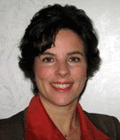 Julie Baron is Principal of COMMUNICATION WORKS. She has over 18 years of communications experience. Julie is a resourceful communications strategist with demonstrated ability to work internally within the organization, as well as externally within the community. Her functional expertise includes executive/employee communications, speech writing, cultural awareness and marketing communications.With a proven track record of positively impacting financial and operating results through communication, Julie’s client list includes Abbott, adidas-Salomon, HUB International, National Association of Realtors, Revell, and Pepsi Americas. Prior to opening the doors of COMMUNICATION WORKS, Julie held senior level communications positions for NEC Technologies, Inc. and Motorola, Inc. She also has agency experience.Julie has published several communication and training articles and has lectured on communications topics including CEO communication, culture development, global communication and internal marketing. She’s been recognized for her leadership abilities, team focus, creative strategy, execution and effective working relationships.An active member of the International Association of Business Communicators (IABC), Julie has held many volunteer leadership positions including president of the IABC/Chicago chapter, the association’s second largest chapter worldwide. Julie graduated from Northwestern University in Evanston, Illinois, with a master’s degree in communications. She holds a bachelor’s degree in broadcasting from SUNY Buffalo.
Julie Baron is Principal of COMMUNICATION WORKS. She has over 18 years of communications experience. Julie is a resourceful communications strategist with demonstrated ability to work internally within the organization, as well as externally within the community. Her functional expertise includes executive/employee communications, speech writing, cultural awareness and marketing communications.With a proven track record of positively impacting financial and operating results through communication, Julie’s client list includes Abbott, adidas-Salomon, HUB International, National Association of Realtors, Revell, and Pepsi Americas. Prior to opening the doors of COMMUNICATION WORKS, Julie held senior level communications positions for NEC Technologies, Inc. and Motorola, Inc. She also has agency experience.Julie has published several communication and training articles and has lectured on communications topics including CEO communication, culture development, global communication and internal marketing. She’s been recognized for her leadership abilities, team focus, creative strategy, execution and effective working relationships.An active member of the International Association of Business Communicators (IABC), Julie has held many volunteer leadership positions including president of the IABC/Chicago chapter, the association’s second largest chapter worldwide. Julie graduated from Northwestern University in Evanston, Illinois, with a master’s degree in communications. She holds a bachelor’s degree in broadcasting from SUNY Buffalo.
 Sean Williams is the owner of Communication AMMO, Inc. He helps leaders improve their communication skills, build strategic communication plans, strengthen internal communication capabilities and effectively measure the results. His clients include the Federal Reserve Bank of Cleveland and KeyBank. Follow him on Twitter at @CommAMMO.
Sean Williams is the owner of Communication AMMO, Inc. He helps leaders improve their communication skills, build strategic communication plans, strengthen internal communication capabilities and effectively measure the results. His clients include the Federal Reserve Bank of Cleveland and KeyBank. Follow him on Twitter at @CommAMMO.
Most recently, Williams was vice president of Corporate Communications for a financial institution, leading the internal communication, and internal and external public relations measurement and evaluation functions during the height of the financial crisis.
Previously, he was manager of Editorial Services for The Goodyear Tire and Rubber Company, responsible for internal communication and video production, photography and event production management. While at Goodyear, Williams lead the team rebuilding the corporate intranet, using editorial content from around the world. He also served as the primary internal communication consultant to the company’s senior leadership and produced videos and still photography for a variety of external and internal constituencies.
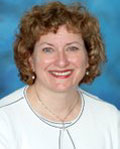 Susan D’Alexander, ABC, is Senior Communications Consultant at Motorola Global Communications. Susan has a 25-year career with Motorola with more than 18 years experience in communication management, including corporate, HR, marketing and corporate social responsibility communications. Susan is a member of the International Association of Business Communicators (IABC) earning an accredited business communicator (ABC) certification in 2008. She holds a Bachelor of Science degree from Western Illinois University and a MBA from Roosevelt University, Chicago, Illinois.
Susan D’Alexander, ABC, is Senior Communications Consultant at Motorola Global Communications. Susan has a 25-year career with Motorola with more than 18 years experience in communication management, including corporate, HR, marketing and corporate social responsibility communications. Susan is a member of the International Association of Business Communicators (IABC) earning an accredited business communicator (ABC) certification in 2008. She holds a Bachelor of Science degree from Western Illinois University and a MBA from Roosevelt University, Chicago, Illinois.
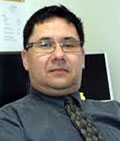 Alex Vass has been a communicator, telling stories and creating messages, all of his working life. He is presently a communications advisor with the Royal Canadian Mounted Police responsible for internal and external communications for the Codiac Regional RCMP detachment based in Moncton, New Brunswick. He along with his fellow RCMP communications colleagues in New Brunswick recognized the need for a
Alex Vass has been a communicator, telling stories and creating messages, all of his working life. He is presently a communications advisor with the Royal Canadian Mounted Police responsible for internal and external communications for the Codiac Regional RCMP detachment based in Moncton, New Brunswick. He along with his fellow RCMP communications colleagues in New Brunswick recognized the need for a
communications audit to demonstrate to senior management the value communications has within the organization and how communications must become part of the organization’s core business. The RCMP in New Brunswick is now on a path towards doing just that. Prior to joining the RCMP in 2005, Alex spent over 25 years as a journalist in Atlantic Canada, 16 years of which was as a reporter with the CTV television
network.
There’s too much silliness, noise, and crap coming at you, and you want a shut-off valve. You want to make more of a difference, working on only what truly matters. Right?
There’s too much information to manage and too many key messages for people to focus on, right?
Then you don’t want to miss this teleseminar! Best-selling author Bill Jensen will share tips, tools, and practices from two of his most recent books, The Simplicity Survival Handbook: 32 Ways to Do Less and Accomplish More and What Is Your Life’s Work? And he’ll tailor all those tips for communicators trying to break through the clutter and get their messages heard and acted upon.
What You Will Learn:
- Practical tips for doing less because you’re working smarter.
- Tips for educating your teammates and senior executive clients.
- Feeling jazzed that you have a lot more control over morebetterfaster than you thought you did!
Real World Questions That Will be Answered:
- Do your 3×5 rules apply to letters sent by mail?
- On the Communitelligence Communication Leadership blog, you and Bill Boyd have been really banging heads over the issue of whose the culprit in the information overload problem. You are really charging a big part of the problem to communicators. What are the biggest mistakes you think communicators are making?
- How long should an e-newsletter be, and any advice on format?
- OK Bill, it’s easy to say do less of what doesn’t really matter, but how do I actually decide what are those things?
- How do you feel about email where the message is entirely in the subject line?
Practical Advice For:
- Dealing with bosses and who just don’t get it.
- Deleting 75% of your emails.
- Composing emails, messages and deliverables that won’t get deleted!
- Getting more out of fewer meetings.
- Doing less to get the budgets you need and much more.
Testimonial:
- “Relevant topic; simple presentation of concepts; actionable tips and tools; down-to-earth presentation style (“one of us”)”
- “I already sent an e-mail this afternoon with the improved subject line format! Makes great sense. Excellent seminar all around — Look forward to more in the future.”
Instructor:
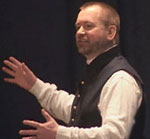 Harvard Business Review , CNBC and Fast Company have called Bill Jensen today’s foremost expert on work complexity and cutting through clutter to what really matters. The Conference Board designed an entire conference around his work.He has spent the past decade studying business’s ability to design work. (Much of what he has found horrifies him.)
Harvard Business Review , CNBC and Fast Company have called Bill Jensen today’s foremost expert on work complexity and cutting through clutter to what really matters. The Conference Board designed an entire conference around his work.He has spent the past decade studying business’s ability to design work. (Much of what he has found horrifies him.)
He is an internationally-acclaimed author and speaker who is known for provocative ideas, extremely useful content, and his passion for making it easier for managers and employees to work smarter and accomplish extraordinary feats.
The common thread in every Jensen presentation is that your biggest competition is not “out there” — in today’s cluttered and morebetterfaster business environments, you are competing for everyone’s time and attention!
His first book, Simplicity, has been hailed as a “breakthrough in the design of communication and understanding,” and was the Number 5 Leadership/Management book on Amazon in 2000. His next best-sellers were Work 2.0, and Simplicity Survival Handbook: 32 Ways to Do Less and Accomplish More.
His latest book, What is Your Life’s Work?, captures the intimate exchanges between mothers and daughters, fathers and sons, and caring teammates, all talking about what matters at work, and in life.
Bill has over 25 years of experience in communication and change consulting. He holds degrees in Communication Design and Organizational Development. He’s CEO of The Jensen Group, whose mission is: To make it easier to get stuff done. Among the Jensen Group’s clients are Bank of America, Merck, Pfizer, Duracell, NASA, The Royal Bank, The World Bank, Walt Disney World, American Express, the US Navy SEALS, the government of Ontario, Singapore Institute of Management, Guangzhou China Development District, and the Swedish Post Office.
Bill’s personal life fantasy is to bicycle around the globe via breweries.
The best way to communicate with people you are trying to lead is very often through a story.
More and more organizations are realizing that stability and predictability are no longer reasonable assumptions. In fact, the number one problem of today’s managers is the difficulty in getting their organizations to adapt to a competitive environment that is neither stable nor predictable. Yet while change is irresistible, the organization often seems immovable.
Drawing on his experience as program director of Knowledge Management at the World Bank from 1996-2000 and his work with many of the top organizations in the world, Steve Denning shows how to identify and craft a springboard story; i.e., a story that will spark action. Using a simple template, you will be equipped to get started on crafting your own springboard stories.
What you will learn:
- The importance of storytelling
- Appropriate situations for telling stories
- Why storytelling can handle leadership challenges for which conventional command-and-control techniques are impotent
- The essential ingredients of a springboard story — i.e., a story to communicate a complex idea and galvanize action
- How and why storytelling can communicate complex ideas, and why stories are so persuasive
- How to find and craft springboard stories for your organization
- How to use storytelling to ignite your career by becoming an authentic leader
- A 10-point template for crafting your stories
- Eight types of stories that you can put to work for you
- How storytelling changed the way the World Bank shared knowledge
Who should purchase:
This exceptional learning opportunity is designed for managers and professionals in:
- Corporate Communications
- Marketing
- Advertising
- Internal Communications
- Public Affairs
- Public Relations
- Organizational Development
- Human Resources
- Corporate Strategy and Development
- Senior Management
- Anyone, anywhere in an organization
It’s also an important addition to the offerings of college/university libraries and bookstores.
Instructor:
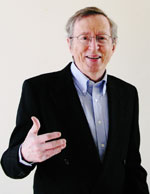 Steve Denning is the former program director of Knowledge Management at the World Bank. He now works with organizations in the U.S., Europe, Asia and Australia on knowledge management and organizational storytelling.
Steve Denning is the former program director of Knowledge Management at the World Bank. He now works with organizations in the U.S., Europe, Asia and Australia on knowledge management and organizational storytelling.
Steve is the author of several books on organizational storytelling, including:
- The Leader’s Guide to Storytelling: Mastering the Art and Discipline of Business Narrative (Jossey-Bass in April 2005).
- Squirrel Inc: A Fable of Leadership Through Storytelling (Jossey-Bass, 2004), a fable that elaborates seven different kinds of organizational storytelling
- The Springboard: How Storytelling Ignites Action in Knowledge-Era Organizations (Butterworth Heinemann, 2000), which describes how storytelling was used as a powerful tool for organizational change and knowledge management at the World Bank
Steve was born and educated in Sydney, Australia. He studied law and psychology at Sydney University and worked as a lawyer in Sydney for several years. He did a postgraduate degree in law at Oxford University in the U.K. before joining the World Bank, where held a number of positions from 1996 to 2000.
In 2000, Steve was named as one of the world’s “10 Most Admired Knowledge Leaders” (Teleos). In 2003, he was ranked as one of the world’s Top Two Hundred Business Gurus: Davenport & Prusak, “What’s The Big Idea?” (Harvard, 2003). In 2005, his book, The Leader’s Guide to Storytelling, was selected by the Innovation Book Club as one of the 12 most important books on innovation in the last few years.
Steve is a Senior Fellow at the James MacGregor Burns Leadership Academy at the University of Maryland.
How effective CEO presentations can help companies rebound during an economic downturn
When a company’s earnings and stock price are on the rise, it may not be critically important how well a CEO performs behind a lectern, in front of cameras and microphones, or at a hearing table. But as earnings and stock price head south, a CEO’s ability to inspire confidence through speeches and presentations can prove essential to a company’s ability to survive and recover. CEOs who communicate well can, at the very least, buy the time needed to put an effective turnaround strategy in place.
With the economy battered by the credit crisis, high fuel prices, and other maladies, growing numbers of corporate leaders face the challenge of finding ways to inspire key audiences who are both very worried and extremely important—employees, analysts, stockholders, regulators, and the press.
This webinar offers some very specific, hands-on advice how CEOs should communicate during tough times. The advice is based on the experience of key CEO’s who have been there and done that –Former CEOs Lee Iacocca of Chrysler and Champ Mitchell of Network Solutions, Jack Welch of GE, as well as current CEOs John Chambers of Cisco Systems and Brightpoint’s Robert Laikin. All used first-person communications effectively to turn companies around or dramatically boost their performance.
Sun Microsystems CEO Scott McNealy once said, “Communication needs to be a core competency of any business. It starts with the CEO.”
You Will Learn How CEOs Can:
- Make communication a priority.
- Be proactive, not reactive
- Handle problems and mistakes.
- Develop and present a recovery plan.
- Match their presentations to their audience
- and much more
Presented by:
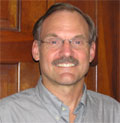 Dr. Jeff Porro, Ph.D. has written “first-person speeches” and provided communication strategies for the CEOs of Sodexo, Eastman Chemicals, the McGraw Hill Companies, Office Depot, the COO of General Mills, as well as for diplomats such as former UN Secretary General Kofi Annan, and other government leaders, and presidents of some of the nation’s leading trade and professional associations. He helps corporate, government and nonprofit leaders take their visions to a new level, moving key audiences with speeches that engage minds, open eyes, touch hearts and awaken the spirit. In addition to offering his expertise to world and business leaders, he has extended his skills to the world of entertainment. Dr. Porro discovered and researched the true story of a Jim Crow-era African American college debate team, and helped turn it into the 2007 feature film The Great Debaters starring Denzel Washington.
Dr. Jeff Porro, Ph.D. has written “first-person speeches” and provided communication strategies for the CEOs of Sodexo, Eastman Chemicals, the McGraw Hill Companies, Office Depot, the COO of General Mills, as well as for diplomats such as former UN Secretary General Kofi Annan, and other government leaders, and presidents of some of the nation’s leading trade and professional associations. He helps corporate, government and nonprofit leaders take their visions to a new level, moving key audiences with speeches that engage minds, open eyes, touch hearts and awaken the spirit. In addition to offering his expertise to world and business leaders, he has extended his skills to the world of entertainment. Dr. Porro discovered and researched the true story of a Jim Crow-era African American college debate team, and helped turn it into the 2007 feature film The Great Debaters starring Denzel Washington.
As head of Porro Associates, LLC, Dr. Porro draws on his background as a research scholar and a Washington policy analyst to weave persuasive arguments. At the same time, his creative writing has given him the skill and empathy to capture a speaker’s voice and evoke the speaker’s passion. Dr. Porro holds a Ph.D. in political science from U.C.L.A..
 Robert Laikin, founder of Brightpoint, has served as a member of Brightpoint’s board of directors since its inception in August 1989. Mr. Laikin has been Chairman of the Board and Chief Executive Officer of the Company since January 1994. Mr. Laikin was President of Brightpoint from June 1992 until September 1996 and Vice President and Treasurer of Brightpoint from August 1989 until May 1992. From July 1986 to December 1987, Mr. Laikin was Vice President, and from January 1988 to February 1993, President of Century Cellular Network, Inc., a company engaged in the retail sale of cellular telephones and accessories. His honors and awards include:
Robert Laikin, founder of Brightpoint, has served as a member of Brightpoint’s board of directors since its inception in August 1989. Mr. Laikin has been Chairman of the Board and Chief Executive Officer of the Company since January 1994. Mr. Laikin was President of Brightpoint from June 1992 until September 1996 and Vice President and Treasurer of Brightpoint from August 1989 until May 1992. From July 1986 to December 1987, Mr. Laikin was Vice President, and from January 1988 to February 1993, President of Century Cellular Network, Inc., a company engaged in the retail sale of cellular telephones and accessories. His honors and awards include:
- Recipient of the William L. Haeberle Entrepreneurial Legacy Award for 2008
- Inducted into the Central Indiana Business Hall of Fame in 2008
- Received a Stevie Award for Best Turnaround Executive in 2007
- Recipient of the Distinguished Entrepreneur Award by the Kelley School of Business Alumni Association (1999)
- Recipient of the Indiana Entrepreneur of the Year Award (1995)
- Received an honorable mention in 1995 Inc. Magazine National Entrepreneur of the Year Award
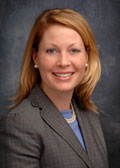 Kelly R. Lang is Director of Strategic Communications in the Corporate Communications department of Cisco Systems. Ms. Lang joined Cisco in 2001 as Marketing Communications Manager and in 2003 joined the Office of the President as John Chambers’ Executive Communications Manager. Today, Ms. Lang is responsible for the Executive Communications and Operations functions including the Office of the Chairman and CEO (OCC), the Chief Financial Officer (CFO), and the Chief Globalisation Officer (CGO). Prior to joining Cisco, Ms. Lang was Program Manager for a Global Event Marketing Organization, Nth Degree, from 1998-2000. From 1996-1998, Ms Lang was Assistant Director of Administration with RCI Group, Inc. after graduating with a Bachelor of Arts degree from the University of Maryland, where she was recognized with outstanding student achievements including Maryland’s Talent and Tutor Search Program.
Kelly R. Lang is Director of Strategic Communications in the Corporate Communications department of Cisco Systems. Ms. Lang joined Cisco in 2001 as Marketing Communications Manager and in 2003 joined the Office of the President as John Chambers’ Executive Communications Manager. Today, Ms. Lang is responsible for the Executive Communications and Operations functions including the Office of the Chairman and CEO (OCC), the Chief Financial Officer (CFO), and the Chief Globalisation Officer (CGO). Prior to joining Cisco, Ms. Lang was Program Manager for a Global Event Marketing Organization, Nth Degree, from 1998-2000. From 1996-1998, Ms Lang was Assistant Director of Administration with RCI Group, Inc. after graduating with a Bachelor of Arts degree from the University of Maryland, where she was recognized with outstanding student achievements including Maryland’s Talent and Tutor Search Program.
Ms. Lang is passionate about business and how communication helps drive business strategy to become a change agent for the organization. Her focus on process, operational excellence and hiring the right talent to support highly visible executives helps drive a more integrated, cross-functional communication effort that highlights the increasingly complex and important role of the communications professional.
Who Should Attend
This webinar is primarily aimed at communicators and executives trying to cope with a slowing economy, including external communications, internal communications, and shareholder communications.
This webinar will help supervisors get the most out of their writers by creating an environment where writers develop and gain confidence, and where the focus is on the writer as much as the writing.
Practical Advice for:
- Building a collaborative relationship with writers
- Creating an atmosphere where writers develop
- Reducing the amount of time rewriting copy
- Improving editing skills
What You Will Learn:
- How to reinforce the notion that writing is valued
- How to improve communication with writers
- How to get the most out of a one-on-one conversation about performance
- How to build confidence
- How to distinguish between coaching and crisis repair
- What to do when you don’t think the writer will ever “get it”
- What to do when it becomes easier to toss the draft and write it yourself
- How to know when to make changes and when not to
- What you can do if you’re not confident
Real world questions answered:
- What processes can help avoid writer disasters at deadline?
- What do you tell a writer who’s article totally misses the mark?
- How should writers and graphic designers interact, and how often?
Instructor:
 Ken O’Quinn is a professional writing coach, who conducts workshops and one-on-one coaching in Fortune 500 companies and global public relations firms. He is the author of Perfect Phrases for Business Letters (McGraw-Hill, 2006).
Ken O’Quinn is a professional writing coach, who conducts workshops and one-on-one coaching in Fortune 500 companies and global public relations firms. He is the author of Perfect Phrases for Business Letters (McGraw-Hill, 2006).
He started Writing With Clarity in the mid-’90s, following a 21-year journalism career, most of it with the Associated Press. He now works with companies such as Chevron, Campbell Soup, Visa, Intel, Eli Lilly, Raytheon, Reebok, Motorola and Sprint, and with PR firms such as Fleishman Hillard, Burson-Marsteller, Porter Novelli and Edelman. He also is a writing instructor for the National Investor Relations Institute. He works with all levels of staff and managers. Ken has been a guest speaker at the PRSA and IABC international conferences and at the American Press Institute. His writing has appeared in major U.S. newspapers and in the Harvard Management Communication Letter and the Employee Communication Management Journal.
We’ve all heard the news: Forget flash (or even Flash). To attract and hold prospects to your website, you need content that meets the needs, values and expectations of your market. Great content draws visitors, attracts links, and builds your organization’s reputation for service and expertise. In short, content is king. But where will your content come from? How will you find it? How will you shape it? And how will you write it for maximum impact — and search engine visibility? Crafting Killer Web Content will show you how.
Learning Topics
In one convenient, 75-minute crash course, you will acquire the practical skills you need to:
- Uncover the hidden know-how within your organization
- Solicit cooperation from the crucial product and service people closest to your customers
- Create keyword-saturated Web glossaries in mere hours
- Select the best content options for your pages
- Craft effective, traffic-building blogs
- Incorporate keyword strategies into your writing
- Develop compelling case studies you can use on your website, collateral packages, press kits and more
Other value adds:
- Debunking the myth about writing long
- Why word-specificity is your friend
- Why testimonials and where they should go
- How to write skimmable sub-heads that tell the story
- Guarantees that guarantee believability
- What readers expect from marketing blog
Instructor:
 Jonathan Kranz is the author of Writing Copy for Dummies and a marketing/PR writer serving consumer and B2B clients in high-tech, healthcare, banking, insurance, education, financial services and other industries. His clients include Boston Private Bank & Trust, Dell Computers, IBM, Liberty Mutual, Pitney Bowes and many others. He is a regular contributor to leading marketing publications such as MarketingProfs.com, RainToday.com, DIRECT magazine, DM News and the Harvard Management Communications Letter. Jonathan has taught writing courses at Harvard University Extension School, Emerson College and Northeastern University, and offers in-house marketing writing seminars to corporate clients.
Jonathan Kranz is the author of Writing Copy for Dummies and a marketing/PR writer serving consumer and B2B clients in high-tech, healthcare, banking, insurance, education, financial services and other industries. His clients include Boston Private Bank & Trust, Dell Computers, IBM, Liberty Mutual, Pitney Bowes and many others. He is a regular contributor to leading marketing publications such as MarketingProfs.com, RainToday.com, DIRECT magazine, DM News and the Harvard Management Communications Letter. Jonathan has taught writing courses at Harvard University Extension School, Emerson College and Northeastern University, and offers in-house marketing writing seminars to corporate clients.
Forward-thinking marketing and public relations executives are using the power of podcasting to communicate directly with their key audiences via the Net. Find out what podcasts are and how you can put them to work for your organization. This webinar, led by the producer and host of the popular podcast On the Record…Online, will take you through the process in five easy steps, to arm you with the knowledge you need to evaluate and decide how to integrate this effective, efficient channel into your marketing or communications program.
Learning Topics:
- The ABCs of Podcasting: what podcasts are and where they came from, how to use them, popular formats and lengths, how to measure and monitor them, and more
- Getting started: the equipment you’ll need, where to find freeware and commercial podcasting software, and troubleshooting staples
- Production tips: how to conduct and record live and phone interviews, what freeware to use to edit your podcast, and how to find podcasts through directories and search engines
- Business case studies: Hear excerpts from leading business podcasts, and learn how Disney and IBM use podcasts to promote events and thought leadership
- Marketing your podcast: Get a primer on RSS-enabling and uploading your podcast, learn how to launch a blog to distribute your podcast, and get valuable leads on how to promote your feed.
Instructor:
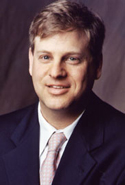 Eric Schwartzman is managing director of Schwartzman & Associates, a boutique public relations firm based in Los Angeles that specializes in helping organizations integrate the Web into their marketing and public relations programs. He is also chairman and founder of iPressroom, which helps organizations extend the impact of their public relations, corporate communications and marketing programs through easy-to-use, marketing communications software tools and services.
Eric Schwartzman is managing director of Schwartzman & Associates, a boutique public relations firm based in Los Angeles that specializes in helping organizations integrate the Web into their marketing and public relations programs. He is also chairman and founder of iPressroom, which helps organizations extend the impact of their public relations, corporate communications and marketing programs through easy-to-use, marketing communications software tools and services.
A recognized expert in the field of new media marketing communications, Eric has presented at numerous conferences and seminars and has appeared at many colleges and universities. He is regularly quoted in articles on podcasting, blogging and new media in publications such as Advertising Age, PR Week, Podcasting News, Econtent, PR News and Media Relations Insider. He blogs about how public relations, the news media and emerging technologies influence perception and shape popular opinion at the Spinfluencer. His podcast On the Record… Online features discussions with leading journalists about how they use technology to cover the news.
Testimonials:
- “Eric makes it easy to understand how to use podcasts to communicate to your key audiences.” Ava Gutierrez, media relations director, County of Los Angeles
- “Just the right amount of information — not too technical and applicable specifically for creating a podcast campaign.” Sarah Prinster, director of marketing, Savi Technology
- “… a must for any marketing or PR exec who wants to get up to speed with podcasting.” Sally Falkow, APRP, Expansion Plus
Business professionals are called on frequently to write messages that attempt to get people to do things: to comply with a request, to accept ideas or to provide support. This often requires overcoming resistance, swaying the skeptics, winning over the “undecideds” or motivating the apathetic.
The ability to influence an audience is critical to business success, yet most people know little about the psychology of persuasion. It is not taught in high school, rarely in college, and almost never in an executive education program.
This session taps into the field of human behavior change and attitude modification. It looks at techniques you can use when you craft messages, for a written communication or for a speech, so that you influence the reader’s thought process and increase the likelihood that your reader or listener will agree. These techniques also will strengthen the writer/speaker’s credibility in the mind of the audience.
Aimed primarily at managers and executives, you’ll learn about gaining compliance and building your credibility through the use of principles of influence. The workshop focuses on crafting written and spoken messages in such a way as to alter the reader’s thought process.
Learning Topics:
- The importance of credibility
- What it really means to analyze your audience
- How to create a strong opening
- How to package your information for maximum impact
- Principles of attitude change: five ways to influence an audience
- Helping the audience remember: tips for making your ideas stand out
Instructor:
 Ken O’Quinn is a professional writing coach, who conducts workshops and one-on-one coaching in Fortune 500 companies and global public relations firms. He is the author of Perfect Phrases for Business Letters (McGraw-Hill, 2006).
Ken O’Quinn is a professional writing coach, who conducts workshops and one-on-one coaching in Fortune 500 companies and global public relations firms. He is the author of Perfect Phrases for Business Letters (McGraw-Hill, 2006).
He started Writing With Clarity in the mid-‘90s, following a 21-year journalism career, most of it with the Associated Press. He now works with companies such as Chevron, Campbell Soup, Visa, Intel, Eli Lilly, Raytheon, Reebok, Motorola and Sprint, and with PR firms such as Fleishman Hillard, Burson-Marsteller, Porter Novelli and Edelman. He also is a writing instructor for the National Investor Relations Institute.
Ken has been a guest speaker at the PRSA and IABC international conferences and at the American Press Institute. His writing has appeared in major U.S. newspapers and in such publications as the Harvard Management Communication Letter and the Employee Communication Management Journal.
Are you the same journalist with the same skills you had five or 10 years ago? When you sit down to write, do you visualize your piece the same way you did then? And what about your publications? Are they keeping up with the times or looking tired and ponderous? What has the Internet taught you about how to produce your publications in such a way that readers can access information more effectively and efficiently?
The Internet has changed forever the way people receive, expect to receive and process information. It’s a “click-here” world in which readers are completely in charge. They want and expect information NOW. So how do you ensure you’re giving them what they want?
Learnings/takeaways:
You will learn how to think verbally and visually and save your readers time. You’ll also pick up practical tips that will help make your text easy-to-read and ensure the information you provide is consistently legible and user-friendly.
The course explores:
- Five characteristics of a good Web site and how to apply them to your publication
- Three principles for writing on the Web and how to apply them to print
- 10 rules for writing on the Web and how to apply them to print.
Best of all, you’ll be able to put these tips to work immediately and see instant improvement in your publications.
Instructor:
 Don Ranly is professor emeritus of the Missouri School of Journalism, where he taught for 32 years. He has an M.A. in journalism, an M.A. in speech from Marquette University, a certificate in film, radio and television from New York University and a doctorate in journalism from the University of Missouri.
Don Ranly is professor emeritus of the Missouri School of Journalism, where he taught for 32 years. He has an M.A. in journalism, an M.A. in speech from Marquette University, a certificate in film, radio and television from New York University and a doctorate in journalism from the University of Missouri.
Don has conducted more than 950 seminars for organizations, corporations, associations and publications. He is co-author of News Reporting and Writing (8th ed.), Telling the Story: The Convergence of Print, Broadcast and Online Media (2nd ed.) and Beyond the Inverted Pyramid and author of Publication Editing.
In 1995, he received a University of Missouri-Columbia Faculty-Alumni Award and was named the O.O. McIntyre Distinguished Professor of Journalism for 1995-1996. In 1998, he won a University of Missouri Gold Chalk award for outstanding service in the training and mentoring of professional students. In 2002, he was elected a Fellow of the International Association of Business Communicators. In 2003, he became a William T. Kemper Fellow for Excellence in Teaching and, in 2005, won a Lifetime Achievement Award from the American Society of Business Publications Editors.
He is a former executive director of the Missouri Association of Publications, which he founded in 2004.
This learning opportunity is ideal for:
- Writers
- Editors
- Designers
- Publishers, print and electronic
It’s also an important addition to the offerings of college/university libraries and bookstores.
Today’s readers are better described as skimmers and scanners; the story is the last thing and the least-read thing they read. Writing effective headlines, captions and blurbs must be an integral part of the writing and editing process — from the beginning, with everyone involved.
More about this seminar from Don Ranly:
“In this seminar, we’ll talk about what makes good headlines or titles and the techniques for creating them. We’ll discuss various kinds of heads — those strictly for news, those for features and those for advertising. What they all have in common is that they must grab readers. They must sell the copy. And EVERYONE must be involved in creating them. We will discuss the creative process that goes into coming up with the best heads.
“Blurbs, break-outs, pullquotes, whatever you choose to call them, grab attention. They stop readers and make them try to find other interesting things in the copy. We’ll discuss what kinds of things to put into blurbs and how to construct them.
“Captions are the most neglected element in most publications. Some photos go without any captions — which is inexcusable. People read captions, so they are a good place to deliver important information and to hook readers into reading the story. Other captions simply explain what’s going on in the photo. People can usually see that. We’ll discuss content of captions and their proper length, as well as typeface, etc. We’ll give you 10 rules for writing them.”
Learning Topics
Underestimating the intelligence of your audience is just one of the 10 major mistakes to be reviewed in this teleseminar. Others include:
- The techniques and importance of brainstorming
- How and why to use literary and poetic techniques
- Four characteristics of brighter, more attractive heads
- How to write summary blurbs that give readers the benefit
- The power of the word “how”
- The importance of tips and of quantifying the benefits
- How to write internal blurbs that tease and coax
- How to write captions that complement and inform
Instructor:
 Don Ranly, Ph.D., is professor emeritus of the Missouri School of Journalism, where he taught for 32 years. He has an M.A. in journalism, an M.A. in speech from Marquette University, a certificate in film, radio and television from New York University and a doctorate in journalism from the University of Missouri.
Don Ranly, Ph.D., is professor emeritus of the Missouri School of Journalism, where he taught for 32 years. He has an M.A. in journalism, an M.A. in speech from Marquette University, a certificate in film, radio and television from New York University and a doctorate in journalism from the University of Missouri.
Don has conducted more than 950 seminars for organizations, corporations, associations and publications. He is co-author of News Reporting and Writing (8th ed.), Telling the Story: The Convergence of Print, Broadcast and Online Media (2nd ed.) and Beyond the Inverted Pyramid and author of Publication Editing.
In 1995, he received a University of Missouri-Columbia Faculty-Alumni Award and was named the O.O. McIntyre Distinguished Professor of Journalism for 1995-1996. In 1998, he won a University of Missouri Gold Chalk award for outstanding service in the training and mentoring of professional students. In 2002, he was elected a Fellow of the International Association of Business Communicators. In 2003, he became a William T. Kemper Fellow for Excellence in Teaching and, in 2005, won a Lifetime Achievement Award from the American Society of Business Publications Editors.
He currently serves as executive director of the Missouri Association of Publications, which he founded in 2004
Learn the seven keys to communication credibility and to a more professional you.
Whether you like it or not, how you present yourself in person or in print does more than leave an impression. For yourself and those you represent, it establishes your basic credibility. That quick note, that dashed-off e-mail or that hurried newsletter may be all your colleagues or clients know about your competence — or how much you care. Learn seven keys to credibility and to a more professional you.
In this seminar you will learn the importance of being:
- Correct (get it right – grammar, spelling)
- Consistent (follow a stylebook)
- Clear (use simple words, short sentences, short paragraphs)
- Concise (save people time)
- Coherent (think structure, organization)
- Complete (answer the questions)
- Creative (be interesting, don’t bore)
Who should purchase this webinar:
- Writers
- Editors
- Designers
- Publishers, print and electronic
It’s also an important addition to the offerings of college/university libraries and bookstores.
Instructor:
 , Ph.D., is professor emeritus of the Missouri School of Journalism, where he taught for 32 years. He has an M.A. in journalism, an M.A. in speech from Marquette University, a certificate in film, radio and television from New York University and a doctorate in journalism from the University of Missouri.
, Ph.D., is professor emeritus of the Missouri School of Journalism, where he taught for 32 years. He has an M.A. in journalism, an M.A. in speech from Marquette University, a certificate in film, radio and television from New York University and a doctorate in journalism from the University of Missouri.
Don has conducted more than 950 seminars for organizations, corporations, associations and publications. He is co-author of News Reporting and Writing (8th ed.), Telling the Story: The Convergence of Print, Broadcast and Online Media (2nd ed.) and Beyond the Inverted Pyramid and author of Publication Editing.
In 1995, he received a University of Missouri-Columbia Faculty-Alumni Award and was named the O.O. McIntyre Distinguished Professor of Journalism for 1995-1996. In 1998, he won a University of Missouri Gold Chalk award for outstanding service in the training and mentoring of professional students. In 2002, he was elected a Fellow of the International Association of Business Communicators. In 2003, he became a William T. Kemper Fellow for Excellence in Teaching and, in 2005, won a Lifetime Achievement Award from the American Society of Business Publications Editors.
He currently serves as executive director of the Missouri Association of Publications, which he founded in 2004.
Universal search changes everything! The advent of Google’s Universal Search has been called “the most radical change to its search results ever.” So, how do you take advantage of Google’s new approach that blends listings from news, blog, video, and image search among those it gathers from web search? In other words, how do you get found in all the right places? Purchase this CD and learn strategies and tactics for expanding the audience for their content through Google News, Yahoo! News, Google Blog Search, Technorati, Google Image Search, Flickr, YouTube, Yahoo Video and a growing variety of other sites.
Learning Topics:
- How to optimize, distribute and measure press releases, RSS feeds, images and video files
- Pick your target keywords for news, blog, image, video and web search engines;
- Position your keywords in crucial locations;
- Create original and unique content of genuine value, including text, images and video;
- Avoid search engine stumbling blocks;
- Build inbound links intended to help people find interesting, related content;
- Just say no to search engine spamming;
- Submit your Sitemap, RSS feeds, and videos to search engines and directories;
- Verify and maintain your listings; and
- Go beyond web search engines to include key vertical search engines.
Presented by:
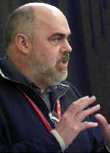 Greg Jarboe is the president and co-founder of SEO-PR, a search engine optimization firm and public relations agency with offices in San Francisco and Boston. He is also a partner in Newsforce, developer of an integrated suite of press release SEO tools.
Greg Jarboe is the president and co-founder of SEO-PR, a search engine optimization firm and public relations agency with offices in San Francisco and Boston. He is also a partner in Newsforce, developer of an integrated suite of press release SEO tools.
Greg is a frequent speaker at Search Engine Strategies, WebmasterWorld’s PubCon, and public relations conferences. He is also the news search, blog search and PR correspondent for the Search Engine Watch Blog.
Greg has more than 25 years of experience in public relations, marketing, and search engine optimization at Lotus Development Corp., Ziff-Davis, and other companies. He graduated from the University of Michigan, attended the University of Edinburgh, and worked on his Masters at Lesley College.
In this information-packed webinar you will learn how to turn your trusty old laptop or desktop into your very own personal writing assistant. Listen to Daphne, a writing coach and former corporate communicator and journalist offer dozens of neat tips to make your computer and software work wonders for your writing effectiveness and speed.
What You Will Learn:
- The powerful tools hidden within MS Word you can harness to make yourself a better writer.
- The exact number of words you should write per sentence for maximum reader appeal.
- Three poweful and unusual ways to use the “search” function for better writing.
- The common misunderstanding about correct paragraph length (hint: your high school and college teachers had it all wrong!)
- The names of powerful pieces of software that you should rush out and buy immediately (it costs less than $40!)
- Two tips for better incorporating research and interview notes into your writing
- How you can become your own best editor.
Presented by:
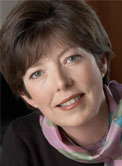 Daphne Gray-Grant started her writing life as a journalist at her family’s weekly newspaper in Vancouver, B.C. – and then quickly advanced to become features editor at a busy metropolitan daily. From there she moved into corporate communications, producing newsletters, brochures and annual reports for a wide range of clients. Despite her many years of experience she never really enjoyed writing — until she set about developing the tools and techniques to do it better. To share this knowledge, in 2005 she launched an online coaching business, http://www.publicationcoach.com , working with individuals and companies seeking to improve their writing skills. Through her site, she offers a popular and free weekly newsletter called Power Writing.
Daphne Gray-Grant started her writing life as a journalist at her family’s weekly newspaper in Vancouver, B.C. – and then quickly advanced to become features editor at a busy metropolitan daily. From there she moved into corporate communications, producing newsletters, brochures and annual reports for a wide range of clients. Despite her many years of experience she never really enjoyed writing — until she set about developing the tools and techniques to do it better. To share this knowledge, in 2005 she launched an online coaching business, http://www.publicationcoach.com , working with individuals and companies seeking to improve their writing skills. Through her site, she offers a popular and free weekly newsletter called Power Writing.
Who should purchase:
- Writers
- Editors
- Designers
- Publishers, print and electronic
Learn the laws and myths that can help keep you out of copyright hot water
As the topic of copyright use and abuse grows in importance in both commerce and everyday life, so do the assumptions about how the law works. This session focuses on 10 of the most significant misunderstandings and misperceptions about the role of copyright in commerce and culture. It reveals the philosophical and economic foundations of American copyright and considers ways that globalization is changing the system.
Learning topics:
- What may be protected by copyright and what may not
- What rights copyright holders have and how they can enforce them
- The limitations of copyright and why it’s important to know what they are
- How digital technology and networking are complicating the copyright system
- How the globalization of culture and commerce is complicating the copyright system
Siva answers real-world questions on:
- The ability of reusing one’s original material after one has left a company
- Using other’s words and images, externally and internally
- How to indicate copyright in text
- Grabbing other’s graphics off the Internet and using them in one’s own presentations
- Using client logos in one’s marketing brochures and Web sites without their permission
- Copying-and-pasting text from other Web sites to use on one’s own site
- The best way to protect one’s writings and photographs published on the Web
Instructor:
 Siva Vaidhyanathan, a cultural historian and media scholar, is the author of:
Siva Vaidhyanathan, a cultural historian and media scholar, is the author of:
- Copyrights and Copywrongs: The Rise of Intellectual Property and How it Threatens Creativity (New York University Press, 2001)
- The Anarchist in the Library: How the Clash between Freedom and Control is Hacking the Real World and Crashing the System (Basic Books, 2004).
Siva has written for many periodicals, including American Scholar, The Chronicle of Higher Education, The New York Times Magazine, MSNBC.COM, Salon.com, openDemocracy.net, and The Nation. After five years as a professional journalist, he earned a Ph.D. in American Studies from the University of Texas at Austin. He has taught at Wesleyan University and the University of Wisconsin at Madison and is currently an assistant professor of Culture and Communication at New York University. He lives in New York City.
Twitter, Facebook, blogs, wikis. A lot has changed on the web in recent years. So isn’t it time you revisited your organizations’ web site content strategy? An obsolete strategy can confound your audience and keep them away in droves. A successful content strategy, however, can be the spark that ignites your web site and helps you plan for and create compelling web content that rings true with your brand, aligns with your marketing plan, and keeps your target audience coming back for more. No small trick in a 140-character world.
What You Will Learn:
- Reasons why you need a web site content strategy
- Benefits of having a web content strategy that integrates with your marketing plan
- Key questions to ask to develop a successful web content strategy
- How to write web copy that is customer-centric, not sender-centric
- Top ten tips for writing concise and easy-to-scan web copy
- Tips for organizing content on a web page
Other Questions:
- What is a web content strategy and why do you need one?
- What process should you use to develop a web content strategy?
- How can you get customers and prospects to read your web copy?
- How can you determine if web content is good or bad?
- If your web content sucks, what’s the best way to fix it?
- How should you organize content on a web page?
Presented by:
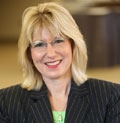 Barbara K. Mednick is an experienced and award-winning marketing communications and PR strategist, copywriter and trainer with more than 25 years of broad communications expertise. As president of BKM Consulting, Inc. in Minneapolis-St. Paul, Minn., she provides strategic marketing communications/PR consulting and planning, copywriting and training to a variety of clients including businesses, universities and nonprofit organizations. Prior to launching BKM Consulting in 1999, she held senior account management positions at several top Twin Cities PR and advertising agencies. During her career, she has garnered a number of industry awards for successful PR and marketing campaigns conducted for clients. She is a member of Minnesota Interactive Marketing Association (MIMA) and an active member of the Minnesota Chapter of the International Association of Business Communicators (IABC) – serving on the board of directors three times. She also serves on the board of directors for Minnesota Computers for Schools and the Ramsey County Workforce Investment Board. Barbara publishes a monthly e-newsletter for clients and colleagues along with a blog (www.bkminsights.blogspot.com), which focus on the intersection of marketing communications, public relations and social media marketing. Read Barbara’s complete bio.
Barbara K. Mednick is an experienced and award-winning marketing communications and PR strategist, copywriter and trainer with more than 25 years of broad communications expertise. As president of BKM Consulting, Inc. in Minneapolis-St. Paul, Minn., she provides strategic marketing communications/PR consulting and planning, copywriting and training to a variety of clients including businesses, universities and nonprofit organizations. Prior to launching BKM Consulting in 1999, she held senior account management positions at several top Twin Cities PR and advertising agencies. During her career, she has garnered a number of industry awards for successful PR and marketing campaigns conducted for clients. She is a member of Minnesota Interactive Marketing Association (MIMA) and an active member of the Minnesota Chapter of the International Association of Business Communicators (IABC) – serving on the board of directors three times. She also serves on the board of directors for Minnesota Computers for Schools and the Ramsey County Workforce Investment Board. Barbara publishes a monthly e-newsletter for clients and colleagues along with a blog (www.bkminsights.blogspot.com), which focus on the intersection of marketing communications, public relations and social media marketing. Read Barbara’s complete bio.
 Lisa Graham-Peterson, MA, ABC, is marketing communications director at CHS Inc., a Fortune 100 company and the largest farmer-owned agricultural cooperative in the U.S. Lisa integrates offline and online strategic programs to support the CHS brand and mission as a diverse grains, energy and foods company. Lisa is an accredited business communicator and active with a number of professional and community organizations. She has been a guest lecturer on integrated communications topics at the Carlson School of Management at the University of Minnesota, as well as St. Catherine University and Metropolitan State University, both in the St. Paul/Minneapolis area.
Lisa Graham-Peterson, MA, ABC, is marketing communications director at CHS Inc., a Fortune 100 company and the largest farmer-owned agricultural cooperative in the U.S. Lisa integrates offline and online strategic programs to support the CHS brand and mission as a diverse grains, energy and foods company. Lisa is an accredited business communicator and active with a number of professional and community organizations. She has been a guest lecturer on integrated communications topics at the Carlson School of Management at the University of Minnesota, as well as St. Catherine University and Metropolitan State University, both in the St. Paul/Minneapolis area.
Have you ever watched your client on television and thought: “Oh, my! Look at how many chins he has, and what’s that terrible glare coming off his shirt and forehead? I never noticed in our meetings that he was that heavy. He also looks scared to death – and why does he keep licking his lips?” You tried to coach him on his message. In fact, you did all you could do to help him develop sound bites, and now you can hardly concentrate on the message with the way he looks, because he is doing so many distracting things.
This CD will teach you how to effectively coach your clients and colleagues for appearances on TV, both live and prerecorded. It will teach you when and how to offer praise and criticism without being offensive. And it covers how interviewees should dress, posture themselves and provide effective message delivery. Your purchase also includes a slew of extras – at no extra cost!
Learning Topics:
- The tricks of the trade to help people appear calm and confident on camera, even if they are not
- How to look natural — from make-up to body language and movements
- Tips and techniques to help prevent some of the unexpected distractions that can prohibit your true message from getting out to your audience
- How to motivate your clients and colleagues to improve their media performances
- How to tactfully and effectively learn to stress the need for “rehearsal”
TJ answers real-world questions on:
- Suggestions to get your boss to undergo some training
- How to convince your CEO to talk to the press
- Techniques to overcome annoying speech tics
- How to keep your answers concise and to the point
- How to provide constructive feedback in a jiffy
- How not to come off as though you’re dodging a question—even if you are
- What your executive should bring into a television or radio interview
- How to prepare an executive for the hard questions
Instructor:
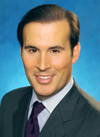 TJ Walker, president of Media Training Worldwide, is one of the world’s leading authorities on media and presentation training. With more than 20 years of media training experience, TJ has trained thousands of CEOs, authors and experts, including Nobel Peace Prize winners, leading government officials in the United States, European prime ministers and African diplomats. He is producer and host of daily audio and video Speakcast broadcasts, covering media and presentation training tips and techniques. A leading corporate trainer, he has personally trained top executives at Unilever, Bank of America, Hess, Allstate Insurance, Charles Schwab, Akzo Nobel, US Trust, Dun and Bradstreet, The Hartford and EMC. He is also the official media trainer of the Miss Universe Organization.
TJ Walker, president of Media Training Worldwide, is one of the world’s leading authorities on media and presentation training. With more than 20 years of media training experience, TJ has trained thousands of CEOs, authors and experts, including Nobel Peace Prize winners, leading government officials in the United States, European prime ministers and African diplomats. He is producer and host of daily audio and video Speakcast broadcasts, covering media and presentation training tips and techniques. A leading corporate trainer, he has personally trained top executives at Unilever, Bank of America, Hess, Allstate Insurance, Charles Schwab, Akzo Nobel, US Trust, Dun and Bradstreet, The Hartford and EMC. He is also the official media trainer of the Miss Universe Organization.
TJ is the world’s most widely published and produced media trainer, with more than 50 books, training videos, CDs and software programs to his credit. He has also been a media columnist for Investor Relations Magazine. Additionally, Walker is known internationally for his many years as a political commentator for the Voice of America Radio Network. More than 65,000 readers subscribe to his weekly Media Training Tips Newsletter, including most of the Fortune 500 corporations. He is a frequent news commentator and has appeared often on MSNBC, Fox News Channel, Court TV and Bloomberg TV. He also has been a syndicated TV and talk show host, appearing on or hosting more than 2000 TV and radio shows. He has also hosted talk radio shows on seven different networks and has been featured in the New York Times, NBC News, ABC News, CBS radio and most major radio news outlets.
Walker was a merit scholar at Duke University, where he graduated magna cum laude. He has lectured or conducted trainings at Yale University, Columbia University and Princeton University. He is also co-leader of the Communitelligence Media Training community and posts a daily video clip on the site.
Who should Purchase:
This practical, information-packed learning opportunity is ideal for public relations professionals, as well as professionals in:
- Corporate Communications
- Internal Communications
- Public Affairs
- Public Relations
- Marketing
- Webcast Marketing
- Anyone who is associated with television broadcasts
- College/university libraries and bookstores
PowerPoint is one of the most used and one of the most loathed tools in the world of technology today. Reminiscent of the old Listerine commercials (“I hate it…but I use it, twice a day), use of PowerPoint has become standard operating procedure for 99% of the business population that needs to communicate with others. The problem is that most people learn PowerPoint in about 15 minutes and then declare themselves proficient. They spend the next 10 years using the same 15-minute skill set. No wonder “Death by PowerPoint” is in everyone’s vocabulary.
This webinar replay will help everyone understand how easy it is to fall into the trap of creating boring, annoying, and useless slides, and how rewarding and easy it can be to fix what is clearly broken.
What You Will Learn:
- Bullets can make you stupid
- Reading bullets can make you stupider
- Conversations aren’t linear; why are most presentations?
- If it moves on screen…kill it!
- Single most important tip? The B key!
- Well-placed photos can save the day
-
Simple design tips that anyone can follow
-
Use templates smartly
Questions that are answered:
- How can you begin to use PowerPoint to enhance your message instead of risking having it get in the way?
Instructor:
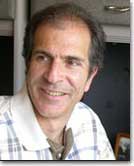 Rick Altman is the host of the PowerPoint Live User Conference and a long-time crusader of bringing a sanity check to the presentation community. Through multiple books, training videos, dozens of online articles, and now a blog and webinar series, Rick offers advice, strategy, and technique for those seeking to master their presentation projects.
Rick Altman is the host of the PowerPoint Live User Conference and a long-time crusader of bringing a sanity check to the presentation community. Through multiple books, training videos, dozens of online articles, and now a blog and webinar series, Rick offers advice, strategy, and technique for those seeking to master their presentation projects.
PowerPoint Live is attended by over 200 annually and has become one of the must-attend events for those in the business of creating and delivering professional-grade presentations.
Who Should Purchase:
- Communications professionals who want to enhance their partnership and value to the business.
If you are like most communicators, you know that text alone is just not enough—today’s employees not only want to see their leaders on video, but want to be seen themselves. YouTube, Vimeo and FaceTime are teaching your employees how powerful video is, and learning about video in their non-work life makes them want to do more with it at work.
Creating meaningful business communications is not the same as recording cute dog tricks. Your employees need to know what works, and what doesn’t. And more importantly, you and your company need to be ready for: increased demand on your IT networks; the need to put policies and procedures in place and the importance of providing training to help them get it right.
In this series you will hear top practitioners talk about how they’ve put a new generation of digital video tools to work in their organization to inspire, lead and train employees; to cultivate employee engagement by putting the right tools in the hands of employees themselves; and to integrate external and internal communications for the kind of results one can only get with truly aligned communications. We’ve found practioners from leading companies to share specifics on what works across categories including internal communications, marketing, PR, social media and human resources.
What You Will Learn:
- How leading companies use employee created video: when, where, and how
- What the IT and regulatory issues are that you need to be most concerned about
- How leaders train and manage employees who are contributing video
- How video can be better integrated with intranets and social media
- The three most important things to AVOID with employee generated content.
- AND most importantly, what kinds of good results happen when you get it right.
Presented by:
 Ronna Lichtenberg is co-founder and CEO, Videotrope. Prior to her entrepreneurial career, Ronna had a long-tenured career contributing to strategic planning and marketing initiatives at Prudential and Prudential Securities. During her tenure, she was the first woman named to Prudential Securities Operating Council. As a superior communicator and strategic consultant, Ronna’s experience incorporates wide-ranging personal experience as a communicator, including former contributing editor of “O”, the Oprah magazine and regular appearances as a workplace expert on national TV. She has published three books in ten languages (to rave reviews) and has a decade of experience as a keynote speaker with Fortune 500 companies and helping small to large businesses successfully execute business development imperatives and strategic initiatives.
Ronna Lichtenberg is co-founder and CEO, Videotrope. Prior to her entrepreneurial career, Ronna had a long-tenured career contributing to strategic planning and marketing initiatives at Prudential and Prudential Securities. During her tenure, she was the first woman named to Prudential Securities Operating Council. As a superior communicator and strategic consultant, Ronna’s experience incorporates wide-ranging personal experience as a communicator, including former contributing editor of “O”, the Oprah magazine and regular appearances as a workplace expert on national TV. She has published three books in ten languages (to rave reviews) and has a decade of experience as a keynote speaker with Fortune 500 companies and helping small to large businesses successfully execute business development imperatives and strategic initiatives.
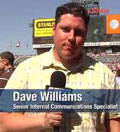 Dave Williams has been working at ESPN since 2000. Prior to joining the corporate communication team he worked with ESPN’s production operations team on all of ESPN’s studio shows including SportsCenter, Sunday NFL Countdown, and Baseball Tonight. As a senior internal communication specialist, Williams brings his vast videography, digital editing, writing, and production experience to the internal communication team. He ensures that the multi-media aspects of the organization’s internal communication strategy are of the same high-quality production techniques that ESPN employees are accustomed to seeing on their external programming.
Dave Williams has been working at ESPN since 2000. Prior to joining the corporate communication team he worked with ESPN’s production operations team on all of ESPN’s studio shows including SportsCenter, Sunday NFL Countdown, and Baseball Tonight. As a senior internal communication specialist, Williams brings his vast videography, digital editing, writing, and production experience to the internal communication team. He ensures that the multi-media aspects of the organization’s internal communication strategy are of the same high-quality production techniques that ESPN employees are accustomed to seeing on their external programming.
 Deirdré Straughan is a Technical Content specialist for Solaris Product Management at Oracle. In this position she produces and/or manages production of technical content (video, white papers, web pages) about key Solaris technologies including storage, networking, and installation. Examples of my video work can be seen here (look for the items with my name in the description). In this position she produces and/or manages production of technical content (video, white papers, web pages) about key Solaris technologies including storage, networking, and installation. Examples of my video work can be seen here (look for the items with my name in the description). Deirdré has been communicating online since 1982. Her experience managing and communicating with online communities dates back to 1993, when she began interacting with Incat/Adaptec/Roxio customers via CompuServe, the Usenet, and listserv. She also wrote, edited and managed a stable of newsletters with 140,000 subscribers, and managed websites and online strategy for Adaptec/Roxio.
Deirdré Straughan is a Technical Content specialist for Solaris Product Management at Oracle. In this position she produces and/or manages production of technical content (video, white papers, web pages) about key Solaris technologies including storage, networking, and installation. Examples of my video work can be seen here (look for the items with my name in the description). In this position she produces and/or manages production of technical content (video, white papers, web pages) about key Solaris technologies including storage, networking, and installation. Examples of my video work can be seen here (look for the items with my name in the description). Deirdré has been communicating online since 1982. Her experience managing and communicating with online communities dates back to 1993, when she began interacting with Incat/Adaptec/Roxio customers via CompuServe, the Usenet, and listserv. She also wrote, edited and managed a stable of newsletters with 140,000 subscribers, and managed websites and online strategy for Adaptec/Roxio.






